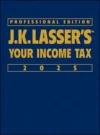Hi-Low Substantiation Rates for Business Travel
Employers that want to use a per diem rate to reimburse employees’ lodging, meals, and incidental expenses on business trips within the continental U.S. (CONUS) can use either the IRS’s high-low method or a reimbursement rate provided by the General Services Administration (GSA) used by the federal government to reimburse federal employees at https://www.gsa.gov/travel/plan-book/per-diem-rates. These rates run on the government’s 2022 fiscal year beginning October 1, 2021.
The IRS has announced its rates for the high-low substantiation method beginning October 1, 2021, through September 30, 2022 (Notice 2021-52). If these rates are used, the costs are considered substantiated (no receipts are required) as long as the employee is not related to the employer. The list of high-cost areas has changed somewhat since the last fiscal year.
- The following locality has been added to the list of high-cost localities: Hilton Head, SC.
- The following locality has changed the portion of the year in which it is a high-cost locality: Jamestown/Middletown/Newport, RI.
- The following locality has been removed from the list of high-cost localities: Gulf Breeze, FL.
For designated high-cost areas within CONUS, the per diem rate effective October 1 is $296 (up from $292). For all other CONUS areas, the so-called low-cost rate is $202 (up from $198). The portion of the $296 high-cost area rate for meals is $74, while $64 of the $202 rate is treated as paid for meals (up from $71 and $60, respectively, in the prior fiscal year). If meals are not provided at restaurants, then only 50% of the cost is deductible.
Employees and self-employed individuals in the transportation industry (e.g., long-haul truckers) may use a flat rate for deducting meals and incidental expenses. The rate starting October 1, 2021, is $69 for CONUS and $74 for any travel outside of CONUS (up from $66 and $71, respectively, in the prior fiscal year).
Note: Self-employed individuals cannot use the high-low method. They must substantiate actual lodging costs but can rely on the GSA per diem rate for meals.
Useful life
For property not depreciated under ACRS or MACRS, the estimate of time in which a depreciable asset will be used.



